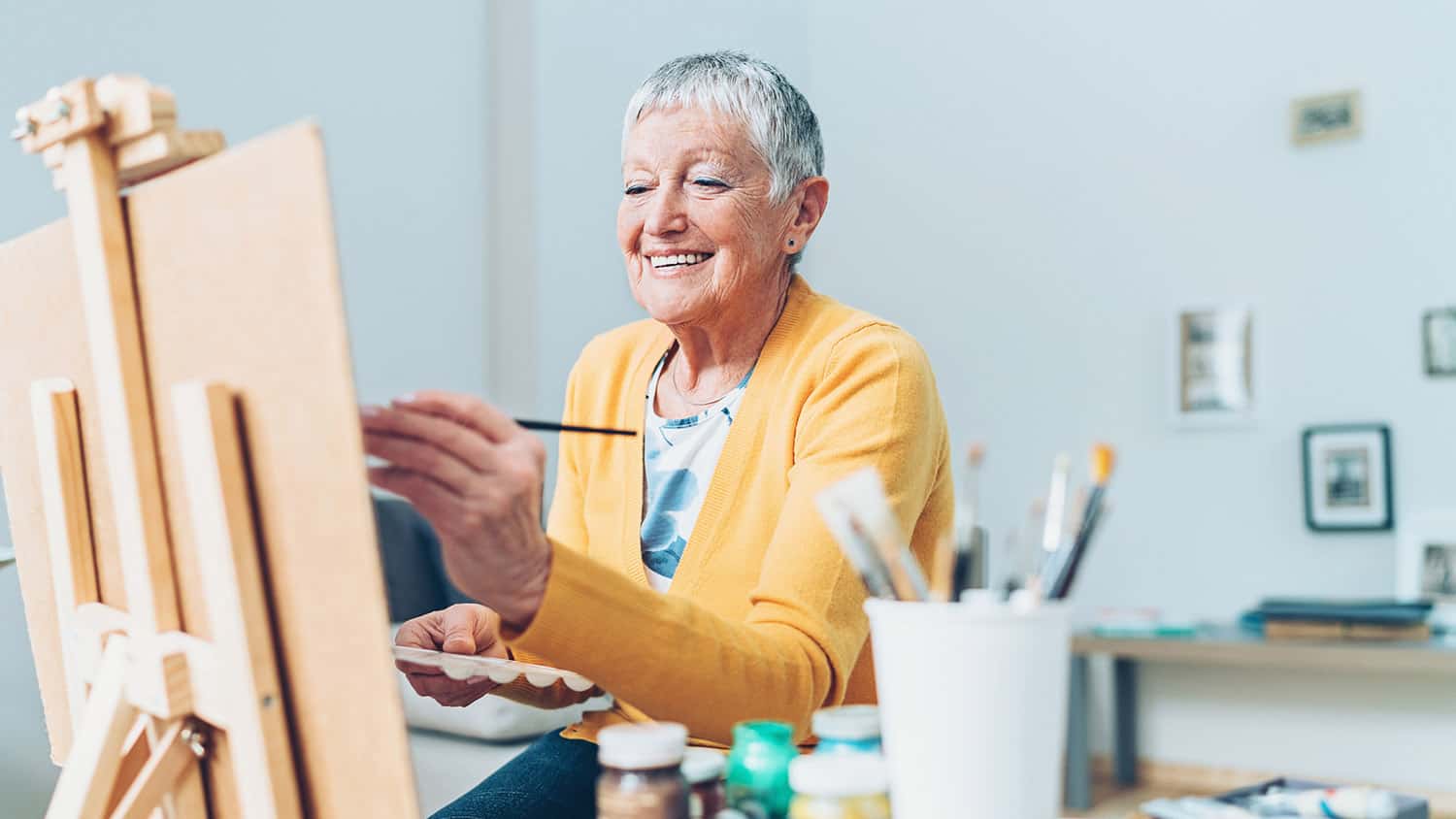
Want to Start Painting After 60? Try Acrylics First!
Are you looking forward to reconnecting with your creative side after 60? You know that this is healthy and will do wonders to smooth out the edges of the past few years. Decades even. One favorite option is painting, but before you begin you need to make a critical choice. What medium will work best?
Watercolors?
Many of my students opt for watercolors as a friendly option for beginners. But is it friendly? In short, No. We call watercolors the master’s medium for good reason. If you have started as a beginner with watercolors you will know that water is a tricky thing to work with. It has a mind of its own.
All too often students try the ‘wash on’ approach, but instead of a lovely image of flowers, for example, blooms of cauliflowers appear and much grumbling follows.
There Is Another Way
I need to make a little confession. After a lengthy mid-career detour, I had to get back to painting full time. Despite knowing the basics of painting I found that oils were frustrating me.
The mixing of color, drying time and my limited time to paint made progress daunting. Another experienced artist suggested doing the underpainting in acrylics.
Captain Underpainting to the Rescue
An underpainting can mean an outline of the subject done with big loose shapes. Or you can go further and almost finish the painting in acrylics. Then go over the whole of it, or selected parts, in one layer of oils. This is a flexible approach that saves time, paint and tempers.
I made use of this approach for many months as I figured out my new path into full time painting. You can paint over dry acrylics with oils. Acrylics are so versatile and dry into an impermeable surface very quickly. But of course wet acrylics will not work over oils so get the sequence correct.
I seldom use underpaintings in acrylics today. But this technique is excellent for beginners.
What Other Benefits Do Acrylics Have?
Aside from quick drying acrylics are water based so you can avoid nasty solvents. For many this is a medical imperative due to skin sensitivity. The smell of solvents, such as kerosene, can be difficult to handle too. I only use this outdoors and try to keep my studio free of solvent smells.
Then there is also the costs. Beginners are spoilt for choice. Acrylics are in plentiful supply at excellent prices. Although paint quality may not be great these are still fine for students to learn with. Winsor and Newton, Maimeri and Golden all make excellent student acrylics.
Painting Surfaces
Acrylics stick to almost anything water can stick to. So watch out for your clothes and use an apron. This also means that the paint will work on card, canvas, wood and watercolor paper. Many types of multimedia can be stuck onto your painting surface and painted over with acrylics too.
Other Materials
A few synthetic brushes ranging from sizes 4-8 in the long flat variety will be enough. A round brush will be great too. These brushes, if washed properly, will last for ages. Even household brushes will work for large paintings like absract scenes. But of course do not use household acrylic paint.
beginners can avoid expensive materials with acrylic painting because the market has so many options. It is more important to focus on having fun with your painting instead of stressing over costs. Also you put those savings towards improving your painting technique.
Level Up Your Skills
Painting’s rewards come much quicker if you learn the essential painting techniques. This may seem evident. But beginners can be nervous about taking lessons in front of more experienced artists. Not to mention friends and family who may find your first efforts a little amusing. I know, we artists are a sensitive bunch.
If this sounds like you then try out online courses. There are many options both paid and free. Also DVD’s and books on the subject. Personally I find books are more difficult when starting out. Watching video several times can help far quicker. Then those books make more sense.
Practice
As expected practice makes all the difference. If time is limited then make a date in your calendar and let everyone know. There is no reason to compromise your painting time to chores. Work it all in and people must respect your time. Plus keep your painting space undisturbed. Even if you paint in the corner of the lounge or bedroom. Leave your work ready for the next painting session.
Try the Beginner’s Course
Are you ready to learn a few new acrylic painting tips and tricks? I ahve a special on my beginners course for Sixty and Me readers.
Make a Start
Most importantly though is that you start your creative work whatever it may be. You made the promise to yourself and now it is time to fulfill that promise. Happy painting.
Have you started painting in your sixties? Have you ever experimented with acrylic paints? What has been your experience?
Tags Creativity






